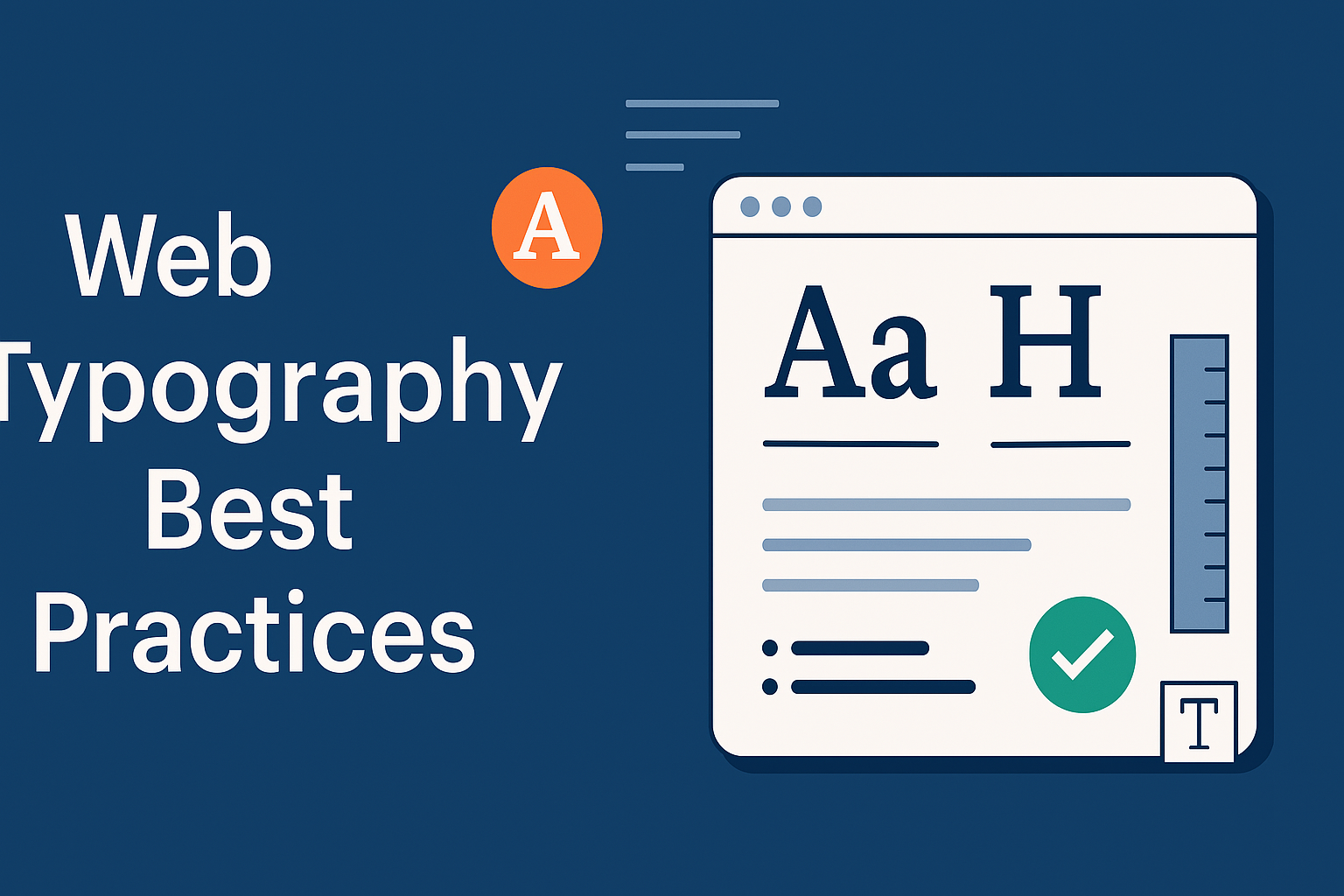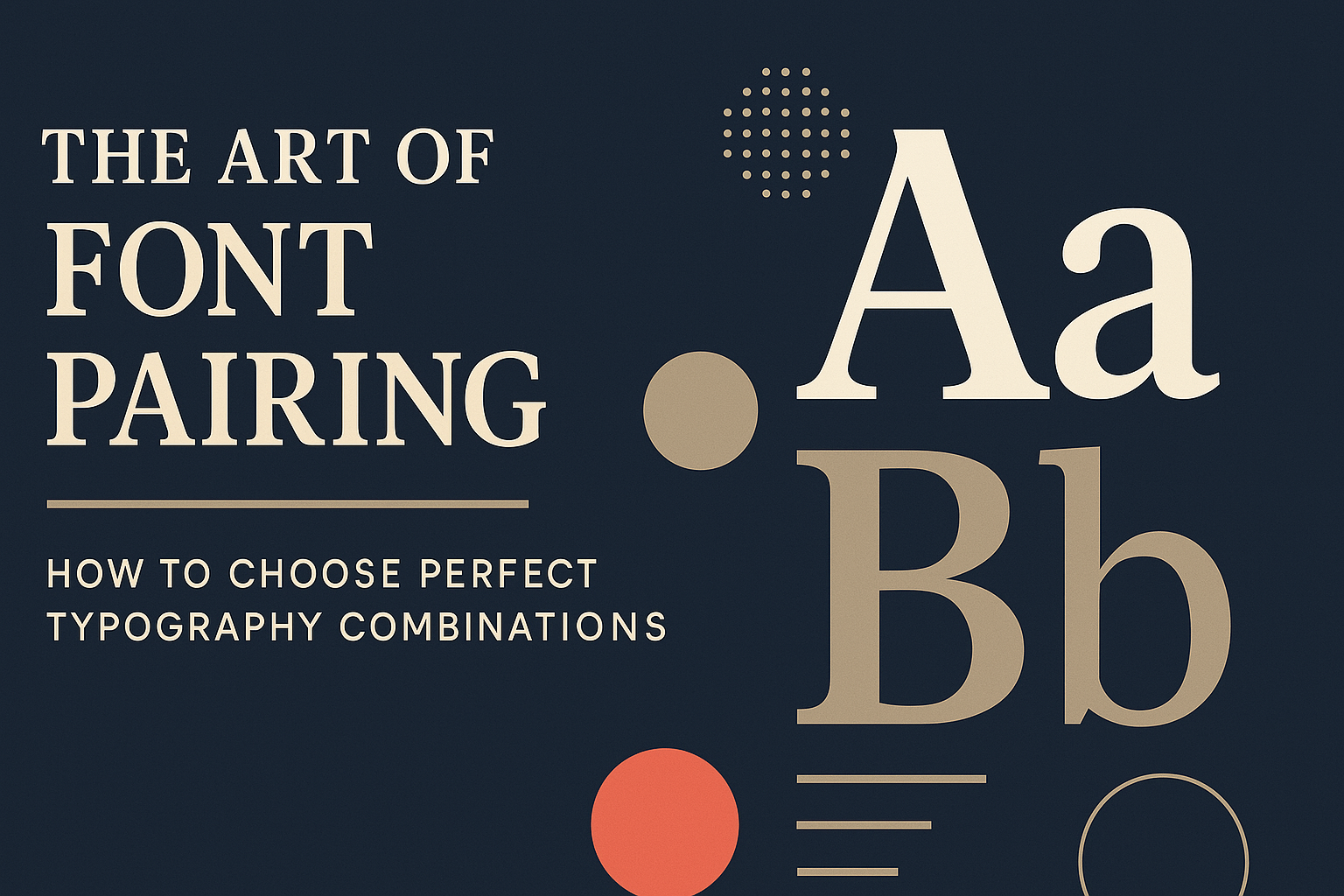
Web Typography Best Practices: Optimizing Fonts for the Digital Experience
Discover essential best practices for implementing typography on the web, from performance optimization to accessibility considerations.
Web Typography Best Practices: Optimizing Fonts for the Digital Experience
Typography on the web is a blend of art and engineering. Unlike print, web typography must address a range of technical and user experience factors—from loading speed and responsiveness to accessibility and device compatibility.
In this guide, we’ll walk through best practices that ensure your web typography is fast, flexible, and user-friendly.
The Technical Foundation of Web Typography
Web Font Basics
Web fonts allow designers to break free from default system fonts. You can implement them via:
- Self-hosted fonts: Gives you full control over performance and privacy
- Third-party services: Like Google Fonts or Adobe Fonts for easy setup
- Variable fonts: A single file that supports multiple styles and weights
Each method has trade-offs in terms of speed, control, and licensing.
Rendering and Load Behavior
When a browser loads a font, it follows this flow:
- Font discovery: The CSS
@font-facerule is read - Font download: The font file is fetched
- Font rendering: The font is applied to the content
This can cause:
- FOIT (Flash of Invisible Text)
- FOUT (Flash of Unstyled Text)
Both can be managed using CSS with font-display: swap or preload strategies.
Boosting Font Performance
Reduce Font File Size
Shrink font loading times by:
- Subsetting: Remove unused glyphs or languages
- Using WOFF2: The most compressed, modern format
- Choosing only necessary styles: Load only the weights and italics you need
Preload Fonts for Faster Rendering
<link rel="preload" href="/fonts/brand.woff2" as="font" type="font/woff2" crossorigin>
Use font-display: swap in your CSS to minimize invisible text:
@font-face {
font-family: 'Brand';
src: url('/fonts/brand.woff2') format('woff2');
font-display: swap;
}
System Font Stacks
Using system fonts improves performance by avoiding font downloads entirely:
body {
font-family: -apple-system, BlinkMacSystemFont, 'Segoe UI', Roboto, Helvetica, sans-serif;
}
Responsive Typography
Fluid Type with clamp()
:root {
font-size: clamp(1rem, 0.5rem + 1vw, 1.5rem);
}
h1 {
font-size: clamp(2rem, 1.5rem + 2vw, 4rem);
}
Optimize Line Length
Keep text blocks readable with ideal character counts:
p {
max-width: 65ch;
margin-inline: auto;
}
Responsive Line Height
Ensure line spacing scales across devices:
p {
line-height: clamp(1.5, 1.3 + 0.4vw, 1.7);
}
Accessibility Considerations
Readable Sizes
Stick to a minimum of 16px for body text to accommodate most users.
Contrast Ratios
Ensure readability by meeting WCAG 2.1 contrast standards:
- Normal text: 4.5:1
- Large text: 3:1
Test your palette with the WebAIM Contrast Checker.
Font Readability Traits
Choose fonts with:
- Clear distinctions between characters (like
1,I, andl) - High x-height for legibility
- Open letterforms and counters
Respect User Preferences
Allow for dynamic resizing and reduced motion:
p {
font-size: 1rem;
}
@media (prefers-reduced-motion: reduce) {
* {
animation: none !important;
transition: none !important;
}
}
Advanced Techniques
Variable Fonts
Reduce file requests while increasing design flexibility:
@font-face {
font-family: 'BrandVariable';
src: url('/fonts/brand-variable.woff2') format('woff2-variations');
font-weight: 100 900;
font-stretch: 75% 125%;
font-style: normal italic;
}
h1 {
font-weight: 700;
font-stretch: 110%;
}
OpenType Features
Enhance text with stylistic features:
.featured {
font-feature-settings: "liga" 1, "kern" 1;
font-variant-numeric: tabular-nums;
}
Common options:
liga: Ligatureskern: Kerningtnum: Tabular numberssmcp: Small capsonum: Oldstyle numerals
Multilingual Support
If you support multiple languages:
- Use fonts with broad character sets
- Adjust spacing and line-height per language
- Provide language-specific font stacks
:lang(ja) {
font-family: 'Hiragino Sans', 'Meiryo', sans-serif;
line-height: 1.8;
}
Measuring Typography Performance
Track Core Web Vitals
Fonts affect:
- LCP (Largest Contentful Paint)
- CLS (Cumulative Layout Shift)
- FID (First Input Delay)
Font-Specific Metrics
Use DevTools and Lighthouse to measure:
- TTFB (Time to First Byte) for fonts
- Total font size
- Load/render time
- CLS impact from late font loading
Typography and Brand Identity
Create a Scalable System
:root {
--font-primary: 'Custom Font', sans-serif;
--font-secondary: 'Support Font', serif;
--font-size-base: 1rem;
--line-height-base: 1.5;
--font-weight-regular: 400;
--font-weight-bold: 700;
}
Using Custom Fonts Wisely
- Optimize for the web (subsetting, compression)
- Provide fallbacks
- Use tools like Font Style Matcher to reduce layout shifts
Final Thoughts
Web typography lives at the crossroads of design performance and user empathy. Beautiful fonts lose their impact if they slow down your page or alienate users with poor readability.
By following these best practices, you can create typography that supports both aesthetics and functionality—improving UX, SEO, and brand trust.
Explore font combinations and live previews with our Font Comparison Tool to refine your choices before deploying them in production.

